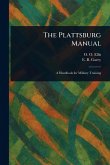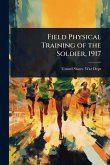A fascinating glimpse into the athletic program at the United States Naval Academy in the early 20th century, the "Manual of Athletic Requirements, United States Naval Academy" offers a comprehensive overview of the physical training and athletic standards expected of midshipmen. Authored by W.A. Richardson, this manual provides detailed guidance on various sports, exercises, and physical activities designed to prepare young officers for the rigors of naval service. This historical document reflects the values and priorities of the era, emphasizing physical fitness, discipline, and teamwork. It offers insights into the training methodologies and the importance placed on athletics in shaping the character and capabilities of future naval leaders. A valuable resource for historians, sports enthusiasts, and anyone interested in the traditions of the United States Naval Academy. This work has been selected by scholars as being culturally important, and is part of the knowledge base of civilization as we know it. This work was reproduced from the original artifact, and remains as true to the original work as possible. Therefore, you will see the original copyright references, library stamps (as most of these works have been housed in our most important libraries around the world), and other notations in the work. This work is in the public domain in the United States of America, and possibly other nations. Within the United States, you may freely copy and distribute this work, as no entity (individual or corporate) has a copyright on the body of the work. As a reproduction of a historical artifact, this work may contain missing or blurred pages, poor pictures, errant marks, etc. Scholars believe, and we concur, that this work is important enough to be preserved, reproduced, and made generally available to the public. We appreciate your support of the preservation process, and thank you for being an important part of keeping this knowledge alive and relevant.
Bitte wählen Sie Ihr Anliegen aus.
Rechnungen
Retourenschein anfordern
Bestellstatus
Storno








